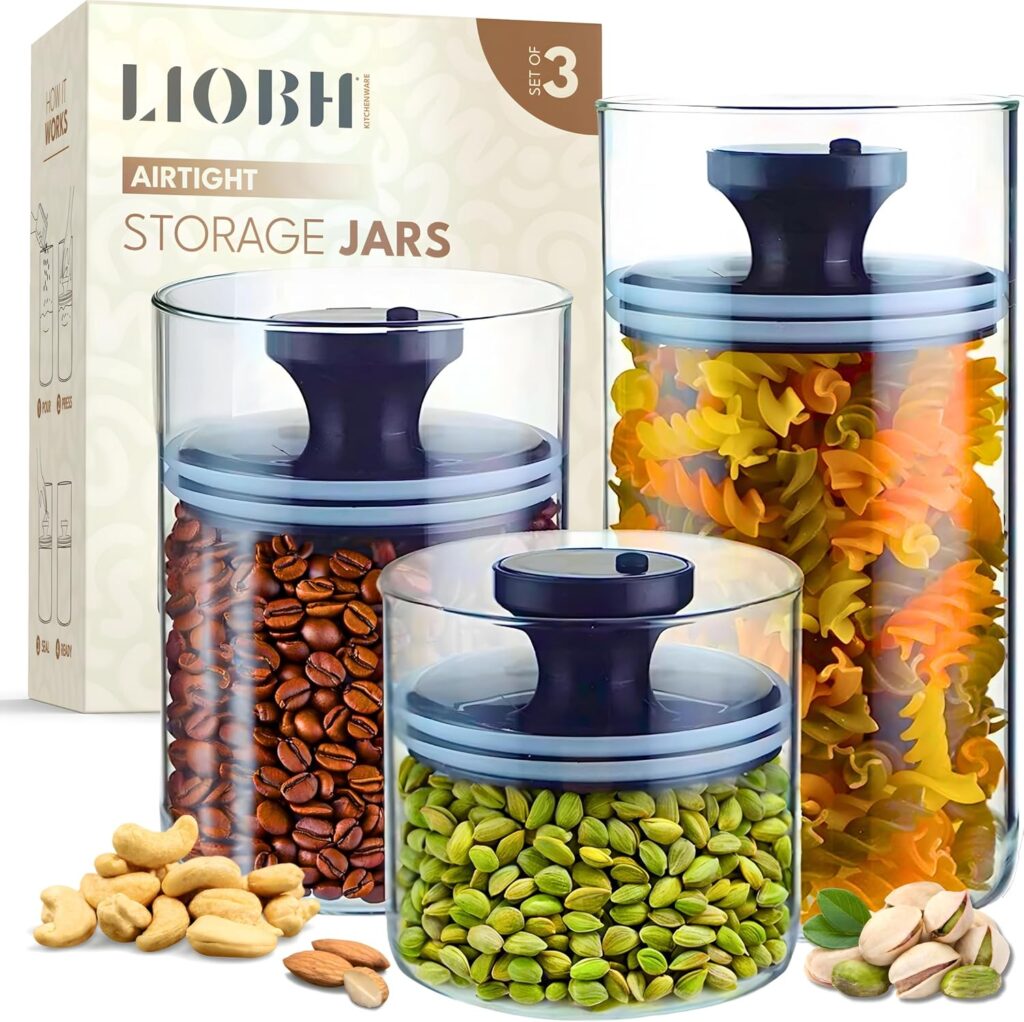The kitchen is often the heart of the home, a place where family gathers and meals are prepared with love. To maintain a well-functioning and aesthetically pleasing kitchen, effective organization is key. Kitchen storage containers play a crucial role in this process, helping you store ingredients, leftovers, and kitchen tools in an organized and efficient manner. In this comprehensive guide, we will delve into the different types of kitchen storage containers, their benefits, tips for choosing the right ones, and how to use them to enhance your kitchen experience.
The Importance of Kitchen Storage Containers
Kitchen storage containers are essential for several reasons:
- Preservation: They help in preserving the freshness and quality of food items by providing airtight and moisture-proof environments.
- Organization: They keep your kitchen tidy by providing designated spaces for various items, reducing clutter and making it easier to find what you need.
- Convenience: Proper storage containers make meal preparation and cleanup more efficient by keeping ingredients and leftovers neatly stored and easily accessible.
- Safety: High-quality containers help prevent contamination and spoilage, ensuring your food remains safe to eat.
Types of Kitchen Storage Containers
Kitchen storage containers are made of different materials, in different sizes, and with different designs to fulfill different functions. Here’s a rundown of the most common types:
- Airtight Containers: Essential for keeping dry goods like flour, sugar, and pasta fresh. These containers have seals that prevent air and moisture from entering, thus extending the shelf life of your ingredients.
- Glass Jars: Ideal for storing both dry and wet ingredients. Glass jars are non-reactive, which means they don’t alter the taste of your food. They are also dishwasher safe and can be used for canning.
- Plastic Containers: Lightweight and durable, plastic containers are great for everyday use. They come in various shapes and sizes and are often microwave and dishwasher safe. Look for BPA-free options to avoid chemical leaching.
- Stainless Steel Containers: These are highly durable, resistant to stains, and do not retain odors. They are ideal for storing items that need to be kept at a consistent temperature, such as soups or sauces.
- Silicone Containers: Flexible and collapsible, silicone containers are perfect for saving space. They can be used for baking, freezing, and microwaving, and are often easy to clean.
- Vacuum-Sealed Bags: These are used to remove air from the container, which helps in preserving food for a longer time. They are great for storing meats, cheeses, and vegetables.
- Spice Jars: Small containers specifically designed for storing spices and herbs. They often come with built-in shakers or pour spouts for easy use.
- Food Storage Bins: Larger containers used for bulk storage of items like grains, cereals, and pet food. They often come with wheels for easy movement and handles for convenience.
Benefits of Using Kitchen Storage Containers
- Enhanced Freshness: Airtight and vacuum-sealed containers help keep food fresh by preventing exposure to air, moisture, and contaminants.
- Better Organization: Storage containers help keep your pantry, fridge, and countertops organized. Labeling containers can further simplify finding and accessing items.
- Space Efficiency: Many containers are designed to stack neatly, making the most of your storage space and reducing kitchen clutter.
- Reduced Food Waste: By properly storing food items, you can extend their shelf life and reduce spoilage, which helps in minimizing food waste.
- Ease of Use: Containers with clear sides allow you to see what’s inside at a glance, making meal preparation more efficient.
Tips for Choosing the Right Kitchen Storage Containers
- Consider Material: Choose materials based on your storage needs. Glass is great for non-reactive storage, plastic is lightweight and versatile, and stainless steel is durable and easy to clean.
- Size and Shape: Select containers that fit well in your kitchen storage areas. Stackable or collapsible designs can help save space.
- Airtight Seals: For dry goods, ensure containers have airtight seals to keep ingredients fresh and prevent moisture from entering.
- Labeling: Opt for containers with labels or invest in a label maker to clearly identify contents and expiration dates.
- Ease of Cleaning: Choose containers that are easy to clean and maintain. Dishwasher-safe options are convenient for busy kitchens.
- Microwave and Freezer Safe: If you frequently reheat or freeze food, make sure the containers are suitable for these purposes.
Best Practices for Using Kitchen Storage Containers
- Label Everything: Put the contents name and the storage date on containers’ labels. This will assist you in monitoring freshness and preventing confusion.
- Store in a Cool, Dry Place: To maintain the food’s quality, store your containers in a cool, dry location out of the sun.
- Use the Right Size: Use containers that are appropriately sized for the quantity of food being stored. Overfilled or underfilled containers can affect freshness and organization.
- Regularly Check for Expiry: Regularly check the contents of your containers for expiry dates and signs of spoilage. Rotate older items to the front to use them before they expire.
- Keep Lids and Containers Together: Store lids with their corresponding containers to avoid searching for matching pieces later.
conclusion:
Kitchen storage containers are indispensable tools for maintaining an organized, efficient, and hygienic kitchen. With a wide variety of options available, from airtight containers to glass jars and stainless steel bins, you can find the perfect storage solutions to meet your needs. By choosing the right containers and following best practices for their use, you can enhance your kitchen’s functionality, extend the freshness of your food, and create a more enjoyable cooking experience. Invest in quality storage containers today and move in the direction of a kitchen that is more productive and orderly!
If you want to buy Portable Handheld Bags, see our blog:
Portable Handheld Bags: The Ultimate Style, Functionality, and More

